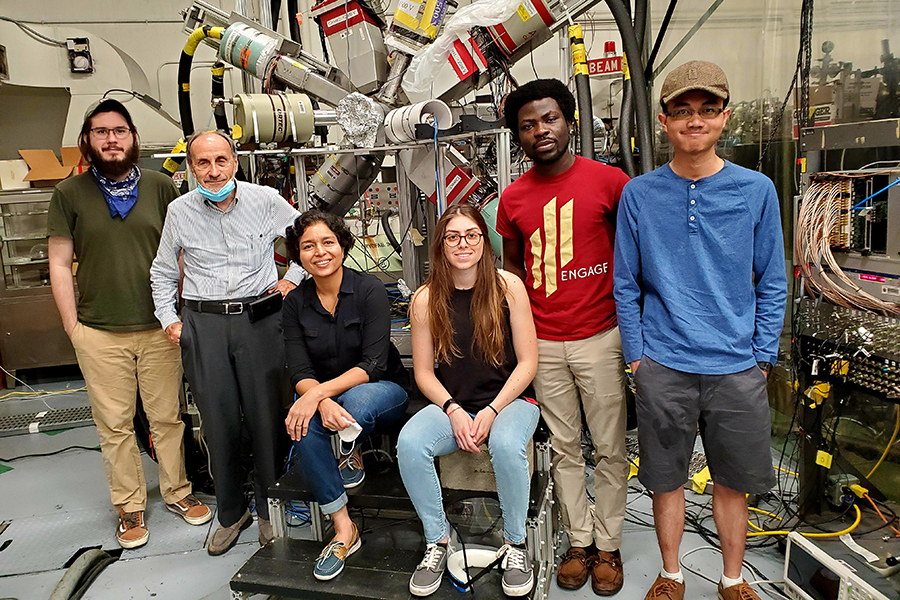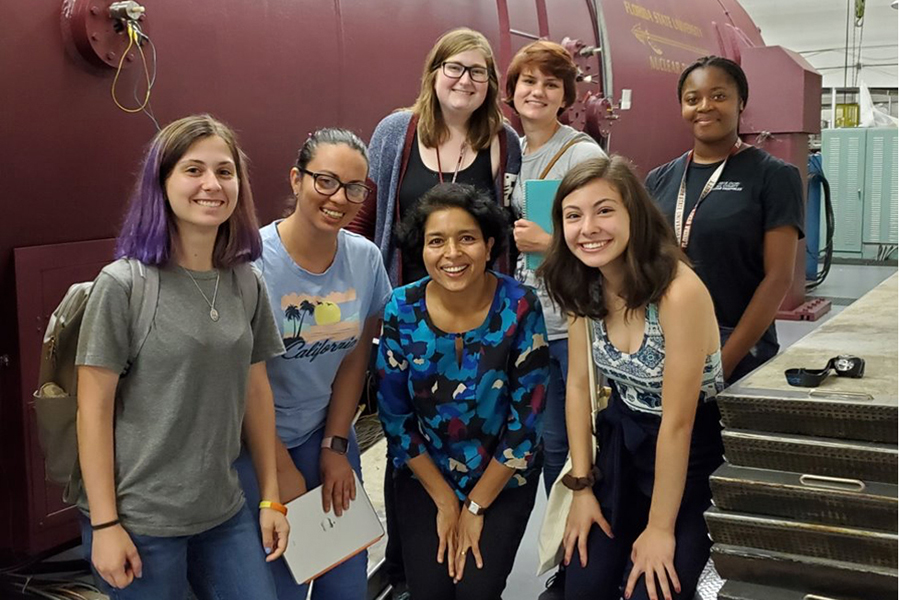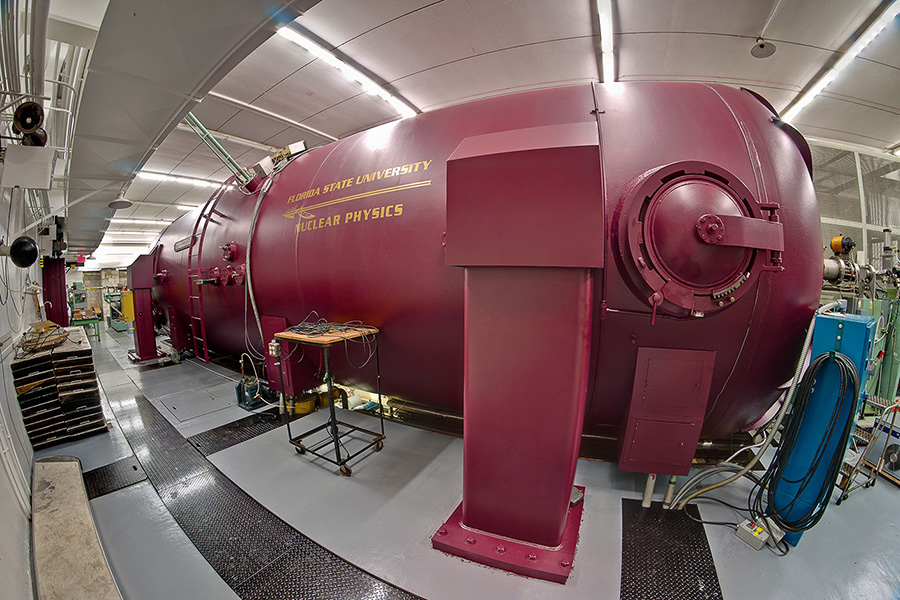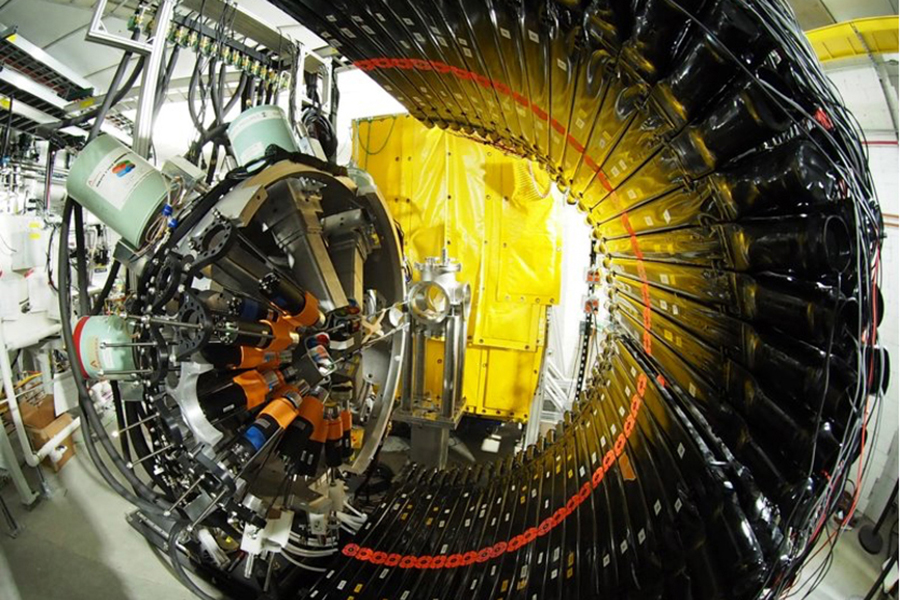A Matter of Acceleration
Vandana Tripathi brings Florida State’s nuclear physics prowess to the international stage
"Have you seen our newest addition to the lab?” assistant professor of physics Vandana Tripathi asks.
Tripathi knows the equipment inside Florida State University’s John D. Fox Superconducting Linear Accelerator Laboratory as intimately as the lines of her hand. Weaving her way through a control room that rivals the bridge on the Star Trek Enterprise, she emerges from an adjoining maze of rooms a-hum with the sounds of scientific discovery.
“This is a brand-new detector — it’s an infant!” Tripathi enthuses, showing off a component of the Fox Lab’s gamma ray spectroscopy system.
For generations of researchers and students, the Fox Lab, housed in FSU’s Collins Research Building on the aptly named Atomic Way, has been a force driving new frontiers in nuclear physics and attracting scientists from all over the world. It exerted its pull on Tripathi, who has called the lab a second home since 2003.


Physics Fascination
Growing up in Agra, India, Tripathi was interested in all forms of science but found a deeper interest in physics as she planned for college. She began her studies there, in the city known by many as the site of the Taj Mahal, before moving to New Delhi to pursue a doctorate.
Tripathi conducted her doctoral thesis research at New Delhi’s Nuclear Science Centre, measuring fusion and transfer reactions. After earning her Ph.D. in experimental nuclear physics from Jawahar Lal Nehru University in 2000, she accepted a position in the nuclear physics division of Mumbai’s Bhabha Atomic Research Center.
“I got a job in India after finishing my doctorate but eventually came to FSU as a postdoctoral fellow due to family commitments. The excellent nuclear physics faculty at FSU made that switch easy, and in hindsight, it was the best professional decision for me,” she said.
FSU Future
Tripathi immersed herself in research at FSU, using the Fox Lab’s series of detector arrays, a superconducting linear accelerator, and the 9 million-volt Tandem Van-de-Graaf accelerator. She also enjoyed and benefitted from working with a globally-oriented team at the physics department.
“Our department is very international, bringing together people from different cultures and backgrounds with different research interests,” said assistant professor of physics Mark Spieker, who earned his doctorate from the University of Cologne, Germany. “This is a great environment for personal growth for young faculty, staff, and our undergraduate and graduate students.”

Tripathi’s research focuses on the structure of subatomic nuclei, especially those that are not naturally occurring and are unstable but are fundamental to our understanding of nucleosynthesis in the early stages of the universe.
“We study some rare isotopes not found in nature — for example, the common oxygen isotope is 16, but 20O would be a rare isotope. We care about rare isotopes because what we see today is not how our universe formed in the beginning — rare isotopes eventually became the stable isotopes we see,” she said.
Beyond her impressive research portfolio, Tripathi is a key player in the department’s ability to acquire new, cutting-edge tools.
“At FSU, she helped our group a lot by bringing the CLARION-2 gamma-ray array to the laboratory through a collaboration she established with Oak Ridge National Laboratory. Many exciting experiments will be possible with this array in the future and lead to new possibilities for our graduate students and for our laboratory in general,” Spieker said.
New Horizons
Tripathi’s universal perspective of physics has made inter-institutional collaboration a hallmark of her work. In May 2022, she participated in a historic moment for the international low-energy nuclear physics community — the opening of the Facility for Rare Isotope Beams, FRIB, on the campus of Michigan State University. The facility, which is helmed by FSU physics alumnus Thomas Glasmacher, replaces the MSU-sited National Superconducting Cyclotron Laboratory.

“The FRIB is the U.S. flagship facility for radioactive beams and has been in the making for about two decades. We have been excited and preparing to utilize it for a long time,” Tripathi said.
Tripathi was a co-spokesperson for the very first user experiment to run after commissioning of the FRIB accelerator and fragment separator. Ten institutes participated in the inaugural experiment, which allowed scientists to measure the half-lives for four new isotopes of phosphorous, magnesium, aluminum and silicon. The team’s findings were published in Physical Review Letters in November.
But Tripathi says this is just the beginning, with the team planning to return to FRIB for additional experimental research in 2023.
“To quote Carl Sagan, ‘We are made of star stuff.’ In trying to understand how this universe came about, it is crucial we understand rare isotopes,” she said. “It is an exciting time for experimental nuclear physics.”

